The Also at Work in Every Intended Something: Belief, Belonging, Sound of My Voice, The East
Veronica Fitzpatrick
‘Reciprocity’ tends to describe a practice of exchange motivated by mutual benefit, as in the exchange of rights or privileges. Yet the idea of coincident giving and receipt may also extend to a “gift” of one harm on receipt of another — as with talion law, where retaliation that is retaliation in kind enacts a kind of dark reciprocity, and the perhaps pleasing symmetry of structural tidiness submits itself as justice.

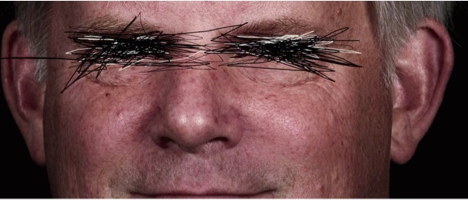
Lie to us, we’ll lie to you. Spy on us, we’ll spy on you. Poison our habitat, we’ll poison yours. So goes the voiceover that opens Zal Batmanglij’s 2013 feature film The East, in which special agent Jane Owen (listed in credits by her alias, ‘Sarah’; played by co-writer Brit Marling) works undercover to penetrate and dismantle an American ecoterrorist cell. In the film’s opening sequence, these lines are intoned over sympathetic shots of oil-covered animals, images typical of news coverage or activist promotional video, crosscut with handheld grainy footage of hooded figures breaking into a private home. As the camera shakily pans across framed family photographs, the voiceover syncs with a cut to a professional headshot, signaling that this residence belongs to the CEO of a company responsible for the spill.
The trespassers are conducting what the film’s characters will later describe as “a jam”: a direct action marshaled in counter attack against those at the helm of several guilty corporations. We see oil begin to seep from the home’s faucets and AC vents, and the film cuts increasingly rapidly between the oil-slicked wildlife — or, “our habitat” — and the vandalized home — “yours” — finally culminating with a second shot of the CEO’s portrait, now with his eyes scratched out.
Though it isn’t until much later that we hear the phrase spoken, already in its opening The East invokes the principle of an eye for an eye. But if the eyes’ destruction seems most obviously to evoke not only talion punishment but a removal of vision, later moments in the film suggest that it’s specifically old vision, or flawed vision, that stands not only to be removed (as the East coerces admissions of guilt), but also replaced (as they produce and distribute videos like that which opens the film, both to elicit fear and to raise consciousness).
The East follows Batmanglij’s debut feature Sound of My Voice (2011), in which a couple of aspiring documentarians infiltrate a cult devoted to a luminous young woman named Maggie who claims she is from the year 2054. Recording his impressions of their first meeting with Maggie, protagonist Peter says simply, “To see her is to believe her.” Here, as in The East, characters must learn to un- and re-see in order to believe, and the distinction between old and new vision reproduces a familiar dichotomy between conviction according to empirically verifiable reason, on one hand, and that resulting from haptic intuition, on the other.
Both films — each a collaboration between Batmanglij and writer/actor Marling — appear to dramatize a kind of politicized Stockholm Syndrome: as the films’ respective “infiltrators” become increasingly adept at performing group integration, the practices and attitudes that comprise membership in the cult and in the collective threaten the stability of their “outside” subject positions; in other words, despite themselves, they start to believe. But also like Stockholm Syndrome, what’s most urgently at stake in these texts is not simply belief, but felt belonging: in these cases, sustained encounters with ostensibly non-possessive intimacy and alternative community formations for which “belief” (in a time-traveling mentor; or in the value of potentially violent political resistance) is merely a symptom.
On their surfaces, these movies appear to pose relatively facile questions — namely: Do the methods of The East amount to activism, or terrorism? Is “Maggie” a legitimate time traveler or a con artist? — for which a sufficiently persuaded mind is the condition for a definitive answer. Yet the films simultaneously float models of potentially non-sovereign relationality, not unlike those investigated by Lauren Berlant in her ongoing work on being-in-relation as the condition of the subject. For Berlant, relationality has the capacity for producing “intimate distances,” or for enacting social simultaneities askance to possession, forms of which (e.g. onscreen figures dancing; an anaphoric sequence of poetry) she identifies in works by artists including Juliana Spahr and Miranda July.1
Berlant links non-sovereignty to an absorption, suggesting that “taking something in is to be non-sovereign, but not destroyed.”2 She suggests that non-sovereign relationality, or forms of being-with without belonging, transform notions of reciprocity and intimacy, as well as the social infrastructures to which they inhere.3 Sound of My Voice and The East dramatize not only the potentiality of people coming toward one another in non-normative ways, but also the imbrication of moving-toward with moving-away, as characters forgo biological family, subvert romantic couplings, and abandon professional advancement in their pursuit of alternative relations to self and others. These films challenge an anecdotal association of community with insularity (belonging : inside) and desertion with exteriority (abandonment : outside) by depicting the worlds made possible when those shaped by corporate and familial productivity are left behind.
I’m interested in juxtaposing this challenge with a contemporary theorization of “walking away.” The phrase is Rei Terada’s; I want to suggest that her sense of walking away, as an alternative to attempts at societal or national inclusion, is particularly crucial to texts such as these, in which one abandons — or even consents to being kidnapped from — life “on-grid,” less to reject relations outright, than to approach a mode of belonging beyond belonging to.
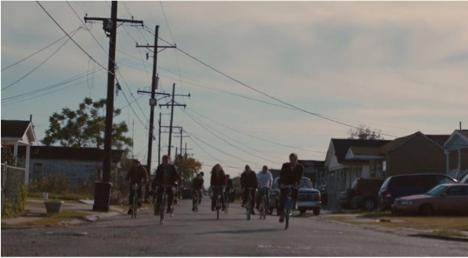
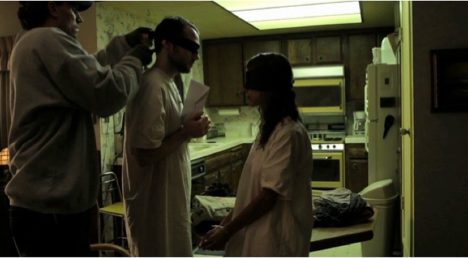
In 2012, at the School of Criticism and Theory in Ithaca, NY, Rei Terada gave a talk titled “Before the Revolution” that begins with a clip from Bertolucci’s eponymous film, the methodological utility of which she describes as a tone-setting device.
Other references to film peppered her lecture and the subsequent breakout seminar, including: Charles Burnett’s Killer of Sheep (1979), to illustrate how anyone at any level of privilege can say that someone else has it worse; Lars von Trier’s Melancholia (2011), in which protagonist Justine’s nihilistic certainty illustrates concretely the notion of “concrete impossibility,” and Luchino Visconti’s The Leopard (1963), a clip from which is screened to give voice to a citation. Signaling that, at the point of discussing Antonio Gramsci’s revolution-restoration concept, it’s customary to mention this novel and Visconti’s film adaptation, Terada plays the clip to vitalize the following quote: “For things to remain the same, everything must change.”
I saw Terada thus mobilizing film in an ostensibly not-film lecture in at least three ways: as evocation (to tone-set), as concept illustration (as with Justine’s cynicism), and to energize a kind of discursive convention (in other words, here’s where one usually gestures toward this).
The subtext of methodological elasticity thus suggests that film affords a different but related range of citation and expressivity than that of philosophy or politics — following which we might ask, what resources does cinematic language offer for thinking what Terada calls “the metaphysical anxiety of radicals”? My own brief reading of The East’s opening aspires to function a bit like a foreboding epigraph, because while reciprocity and mutual consent as the conditions for relations of transformed intimacies figures prominently in both of Batmanglij’s films, and particularly in The East, these same notions can’t be unstitched from the retaliatory politics that ultimately breaks with and threatens intimate formations.
The chorus of Terada’s talk was “walk away,” a reluctant coercive she repeated several times as an alternative to attempts either to enlarge or to destroy an inclusion model of societal participation (or of being in the world). The concept is enigmatic, generative yet frustrating: to walk away is to abandon without giving power to the abandoned, to refuse without reinforcing the terms of participation that in their limitedness or inadequacy prompt refusal. Like a teenager closed to the very premise of negotiation, walking away, thus imagined, affectively undermines the challenges of seeking inclusion because it refuses to acknowledge even the presence — let alone prevalence — of its terms.
However: what strikes me is the tension between walking away from always already fucked systems, tactics, and even affects, and the concomitant desire to dwell in: to linger within what isn’t working, and even within the self-described claustrophobia of Terada’s lecture itself. Perhaps that dwelling-in is not solely masochistic, but enables us to recognize and grapple with remainders, supple and persistent — the “also” at work in every intended something. Asked about new models of politicized work within the academy specifically, Terada referred not to the elective distanciation and solitude one might initially associate with walking away, as in away from, but to the communities instantiated around collaborative projects, and to a kind of socialization alternative to professional hierarchies and antagonisms. It’s here, with the ‘also,’ the remainder or side effect of walking away, that Terada’s concerns intersect with those of Lauren Berlant in her ongoing work on common spaces, awkward dwelling, and the attunement inherent to being-with without belonging.
Berlant has written widely on intimacy, and particularly on energies of attachment divergent from conventional tropes of kinship (for example, the heterosexual procreative romantic couple).4 One place she’s located these energies is in the ending of Liza Johnson’s 2009 film In the Air, which in lieu of conclusive dialogue presents its characters performing circus movements over Alice DeeJay’s (arguably timeless) 1999 club hit “Better Off Alone.” For Berlant, the film’s ending gives us bodies attempting and flailing through collaborative movement. They move awkwardly but kinetically and somehow together: performing social proximity, without physical inhibition or adherence to a conventional expectation for narrative closure.
Abandonment, as the movement away from an old life, is an obvious thematic of Batmanglij’s films. But it’s also a misleading one, one that can’t be cashed out, because as much as these characters are moving into lives “off-grid,” they are also enacting proximities in explicitly ritualized ways that in turn push the films, too, to fold back on themselves, particularly through the use of callbacks, or moments in which a line — though here I want to extend this inclusion to an action or an image — accrues distinct significances through strategic repetition. Such returns resound, and in the reverberations each film expresses its pedagogy: its investment in using repetition to map the distances characters travel — not only away from their lives “outside” the new form of inclusion, but toward new ways of seeing, and of being with, one another.
The primary issue on which Sound of My Voice turns is faith: the unwavering faith of Maggie’s followers provides them continued access to her meeting space, which a series of increasingly shorthand montages reveals as the wall-to-wall beige carpeted basement of an unoccupied suburban model home. Peter and girlfriend/documentary collaborator Lorna submit themselves to be blindfolded, bound, dressed in nondescript scrub-like clothing, and driven with other initiates to an undisclosed subdivision, where Maggie lectures to and tests her subjects. In a crucial evaluative scene, the initiates are seated in a circle on and around a black plastic tarp. Maggie coerces each follower first to eat an apple, which she describes as representative of maturity and knowledge, and then to exhibit commitment to the innocence of character that’s valued in the future (from which she came) by throwing the apple up. Soon, from desire to please, or to renew their commitment, or simply as physical reflex, they each puke the apple onto the tarp.
This “teaching moment” escalates into aggressive provocation when Peter, having previously swallowed a wireless extension of the camera built into his eyeglasses, claims never to have vomited in his life, and Maggie interprets his incapacity to the group as an anal-retentive blockage. Maggie menaces Peter, inserting herself between him and Lorna, whom she instructs not to interfere on his behalf. Marling’s Maggie has to this point been ethereal, floating among the initiates in a trailing robe, but here she sets on Peter with the relentlessness of a high school bully, berating him until he produces the desired breakthrough. Maggie accuses Peter of fixating on what can be seen and controlled at the expense of what can be felt, or known only by feel, and insists that such emotional congestion has a root in past trauma. She eventually pushes him to confess that his grandfather — in whose custody he once lived, after his mother committed suicide — molested him throughout his childhood. The confession comes haltingly, and given that Peter later claims to have fabricated it for Maggie’s benefit, it’s unclear whether his pauses and re-routings reflect a genuine excavation of repressed experience, or merely its convincing impersonation. What is clear is the way in which this scene invests in a dichotomy between reason, the optical, hardness, and control, versus affect, sensation, softness, and receptivity. We see this emerge through Maggie’s equation of physiological retention with emotional impotency, and even in the initial premise that an adequately “deep” symbolic rejection of repressive conditioning obtains only in literal vomit (as opposed to simply spitting ‘the apple’ out). This dichotomy serves to retrain initiates to embrace new ways–her way–of being, but also to differentiate those who don’t belong.
A similar oppositional framework is central to The East, wherein it manifests most tellingly precisely where non-retaliatory reciprocity emerges: in rituals and games. The weeks Jane spends attempting to find the group that calls themselves The East are rife with activist clichés, beginning with the Birkenstocks she’s given by supervisor Sharon (Patricia Clarkson) to indicate that she’s been hired. The film presents the conversion narrative of her gradual radicalization by depicting Jane’s “point A” as explicitly hypocritical: cycling alongside freegans by day, and eating McDonalds in her comfortable motel room by night. Once “inside” The East, however, Jane’s challenge is not to seamlessly perform for fear of exposure, but to show her seams in order to stay–effectively, to turn herself inside out, and become, as The East’s implicit leader Benji (Alexander Skarsgård) says, “soft enough” for the truth of what they do.
Benji says this to Jane in the woods after her first dinner with The East. At this point, Jane has found and penetrated the group through feats of literacy and competence: she identifies a member by the compass hanging from his van’s rearview mirror; she self-induces injury to secure initial access to their space; she signs proficiently to communicate with the deaf woman assigned to her watch. Then she is brought a straitjacket, and told that if she wants to join the group for dinner, she must wear it. We might initially assume that this too is a test, something else for Jane to outsmart.
If the dinner is a test, it’s not testing for the escape artistry that Jane’s straitjacket calls to mind — rather, the proliferation of straitjackets around the table indicate this is an occasion for participation, not ingenuity. Invited to eat first, Jane struggles and fails to wield the long spoon between her teeth. Benji’s remark that “there’s no wrong way” reads less like encouragement than like a clue, which she seems to decode by a logic of negation: to believe there is a wrong way, thrown into relief by a right way, is the province of manners, and it’s tempting to imagine that the ethos of a group like The East foregrounds a rejection of conditioned social behavior (Luca’s pedantic primer to dumpster diving supports this reading). Jane thus forgoes the spoon, pulls her bowl close, and lowers her face to eat. Rising with a bit of soup clinging to her lip, she’s ostensibly succeeded — but the scene treats this, too, like an error, as the music rises and we cut to an explicitly aestheticizing overhead shot, highlighting both the ceremony of their method and the rhythm of feeding/being fed, such that no two mouthfuls may follow in succession, each ingestion attended by a reciprocal assist.
In her final interview with the agency, Jane is told that she’s never failed at anything. Here, we see her failure, only it doesn’t initially obtain as such because she effectively solves the problem. Though she interprets the moment as a sort of skills test — an opportunity to demonstrate strength — Benji’s rejoinder reinforces the importance of receptivity.
Much of The East’s narrative organizes around Jane’s failures, in which she interacts with the bodies’ unseen/unseeable interiors. First, Benji invites her to gut a deer that the group discovers in the surrounding woods and she cuts too deeply, striking the deer’s intestine and releasing its shit. Taking over, Benji turns the error into a teachable moment, preaching the importance of acknowledging the messes that constitute vitality. Indeed, the lesson preaches confrontation, especially when Benji takes Jane’s hand into the deer. “Feel the last of her living parts,” he says, and Jane complies, touching the slick innards as if to become sufficiently soft through osmosis. The East parallels this precise moment when member Izzy (Ellen Page) is shot while fleeing a jam, and their resident doctor’s hands shake too severely to perform the necessary surgery. Jane volunteers, and Benji looks on in awe as she rolls up her sleeve and reaches into Izzy’s cavity. It’s crucial that, as she searches for and finally retrieves the bullet, Jane closes her eyes; thus is she less an agent than a vessel for Doc’s instructions.
But if the film’s narrative structure encourages our expectation for an eventual “success” to complete Jane’s conversion, such closure is foreclosed when Izzy dies regardless. To take seriously the idea that there is, as Benji suggested, no wrong way — and instead a plurality of ways — requires that we cease perceiving situations as problems to be solved, and embrace the awkwardness endured in the attempt. Batmanglij’s films proliferate games and rituals that structure intimacy according to parameters of consent and reciprocity: like the negotiations that constitute The East’s revised game of spin-the-bottle, in which one player may request a particular kind of contact from another, like a hug, and the respondent may accept, decline, or propose an alternative, like a high five. As a result, players combine at random in a wide and unpredictable range of proximities. Similarly choreographed to involve improvisation is The East’s bathing ritual, in which group members bathe Jane and ask her, repeatedly, if it/she is okay. Close-ups of wet skin emphasize the interrelation of vulnerability and intimacy, as Jane must reassess and consent anew to each moment as it arrives.
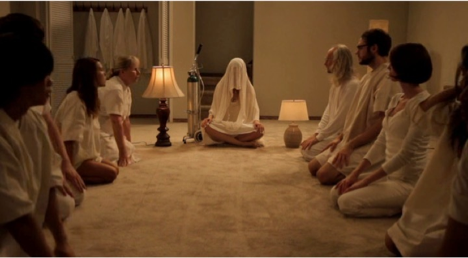
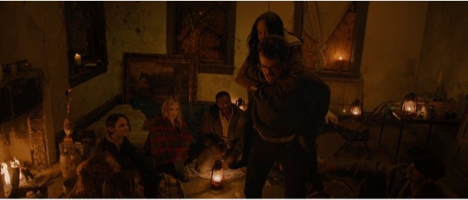
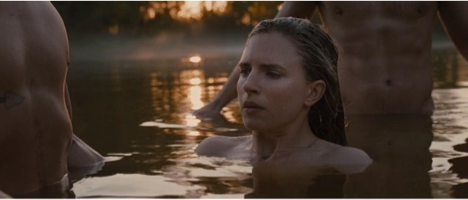
The explicit political message of The East is clear: the film exposes each of its members to Jane and to us as prodigal former benefactors of the very socioeconomic milieu targeted by their jams: Doc is a medical school dropout victimized by pharmaceutical side effects, Izzy’s father is the CEO of a targeted petrochemical corporation, and even Benji inherited the estate in which they appear to be squatting. Expatriates of good families and promising careers, they are particularly vulnerable to bourgeois ressentiment, to the auto-misapprehension Wendy Brown describes as “becoming addicted to seeing [oneself] as virtuous in the face of bad, unethical power.”5 Jane ultimately breaks from both The East and her position at the agency to go rogue, tracking and attempting to radicalize other agents to work according to principle rather than professionalization; like Peter of Sound of My Voice, who appears at least to consider the possibility of Maggie’s authenticity, her belief, however unlikely, is affirmed.
Yet the more potent potential of these works is in their depictions of being-with as the structural echo, the “also,” of efforts to walk away. What is perpetually ‘east’ of the generic Good Life, crucial less for its attainability than for its rhythmic retreat? A mind moved from one belief to another; or rituals that re-create intimate formations, mutable and non-coercive.
Working to dialogue with Marx’s early writings on the stupefying nature of private property, Michael Hardt poses the following questions, “What would it mean for something to be ours when we do not possess it? What would it mean to regard ourselves and our world not as property?”6 At stake in the question are the ways in which ‘community’ responds, materially and fantastically, to the displacement of attachment, by attunement. Batmanglij’s films cast light on a potential answer: it would mean to derive relations from non-possessive proximity, and from the unbelonging at the site of reciprocation that produces worlds, both unbelievable and necessary.
Notes
Veronica Fitzpatrick is a writer and Ph.D. candidate in English and Film Studies at the University of Pittsburgh. Her dissertation, The Rehearsal for Terror, concerns sexual trauma and the modern horror film. Her work has appeared in or is forthcoming from In Media Res and The Apartment Complex: Apartment Plots in Global Context, and she is a founding co-editor of The Brink.
See: Juliana Spahr, Fuck You — Aloha — I Love You (Wesleyan University Press, 2001) and Miguel Arteta and Miranda July, Are You the Favorite Person of Anyone? (2005).
Lauren Berlant, “Sensing the Commons” (lecture, School of Criticism and Theory, Ithaca, NY, July 2012).
Lauren Berlant, “Austerity, Precarity, Awkwardness,” November 2011, https://supervalentthought.files.wordpress.com/2011/12/berlant-aaa-2011final.pdf
See Intimacy, ed. Lauren Berlant, University of Chicago Press, 2000; and Lauren Berlant and Lee Edelman, Sex, or the Unbearable, Duke UP, 2013.
Wendy Brown (“Wounded Attachments,” Political Theory 21.3, 1993, pg. 400) paraphrased by Lauren Berlant in “The Subject of True Feeling: Pain, Privacy, and Politics,” Cultural Pluralism, Identity Politics, and the Law, ed. Austin Sarat and Thomas R. Kearns (Ann Arbor: University of Michigan Press), 1999, pg. 76.
Michael Hardt, “Reclaiming the Common in Communism,” The Guardian, February 2011, http://www.theguardian.com/commentisfree/2011/feb/03/communism-capitalism-socialism-property